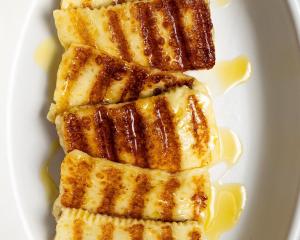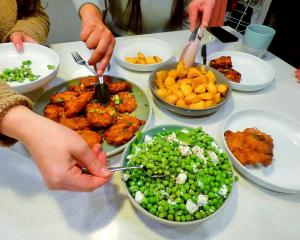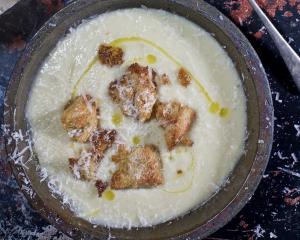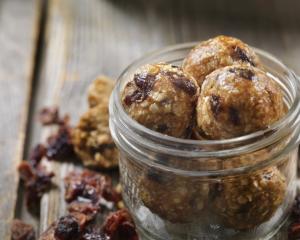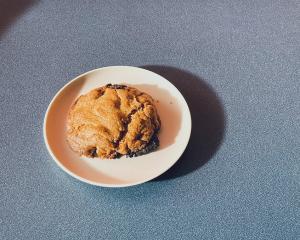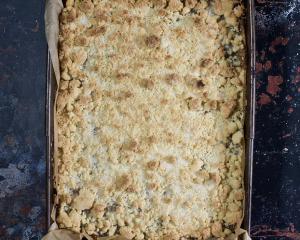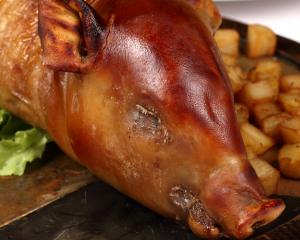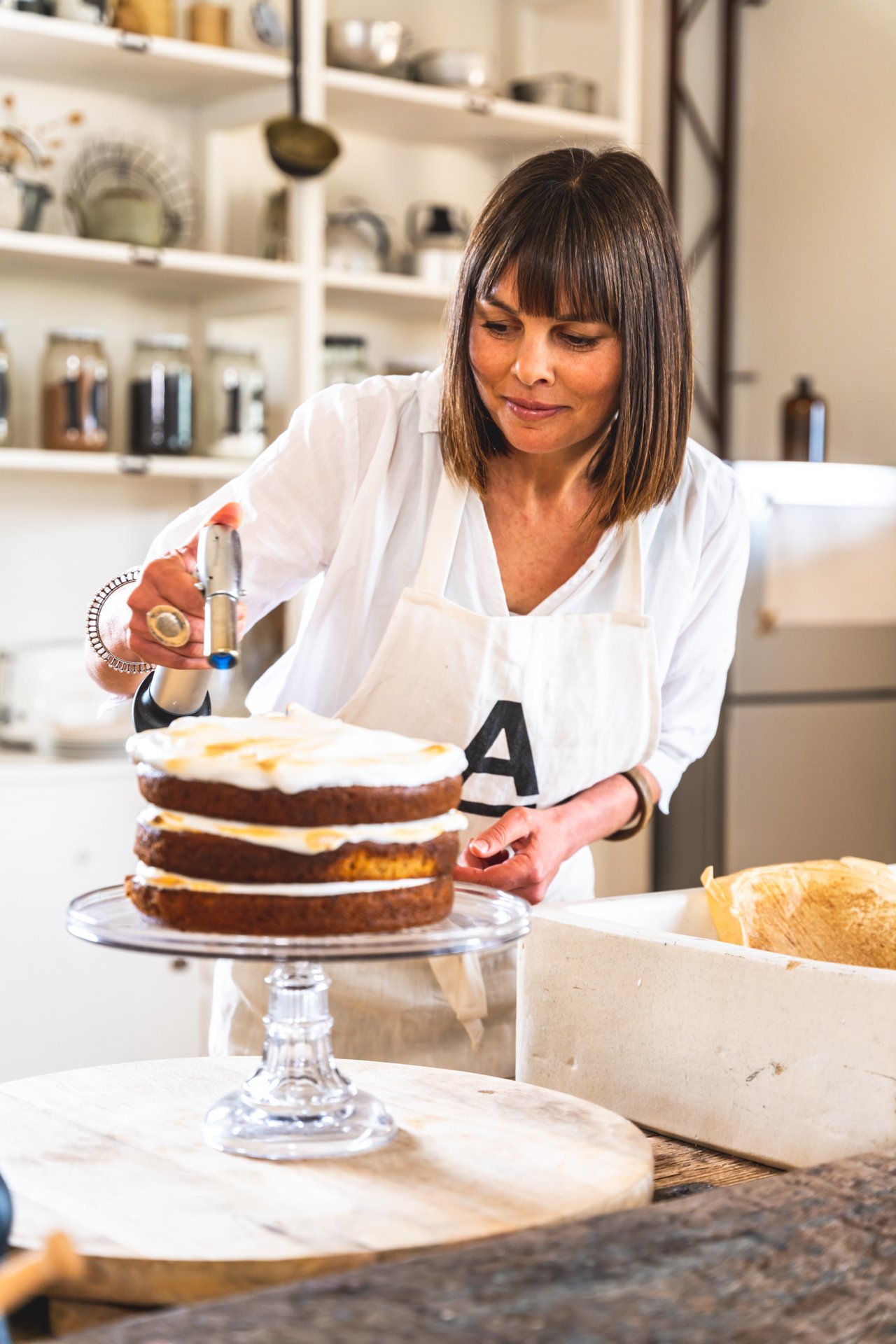
Hausler grew up in the Barossa Valley in South Australia, so she called them her "country gatherings" and would set the table with any foliage she could find at the local market and use the vegetables she grew on her terrace rooftop.
"My instincts were always to re-create farmhouse living, despite being in a tiny city apartment."
But when a 150-year-old stone farmhouse in the Barossa Valley came up for sale it was an obvious next step.
"We moved in as the sheep were moving out. Well, almost. In renovating our new home, electricity was our first exciting achievement, closely followed by running water."
But the bonus was the land — they foraged for wild olives, found windfall apples in a forgotten orchard and learnt how to brine, make cider vinegar and then sourdough and kombucha. She got involved in the local farmers market and community events.
"The biggest surprise was how easy it was to find familiar food territory with others despite our plant-based eating habits."

To save her mother from having to cook two meals, Hausler offered to cook for herself and her mother supported her in her endeavours.
"It was the best crash course in cooking."
As a teenager, Hausler worked in restaurants washing dishes on the weekends — something she blames for agreeing to open a restaurant with her brother in Bangkok 26 years ago. She worked in the kitchen helping wherever she could.
It then led to her tea business — Scullery Made — as she had been hand-blending tea for the Bangkok restaurant. When she moved back to Australia 20 years later and started working for Australian food enthusiast Maggie Beer, she began doing something similar for Beer’s farm shop.
"Next thing you know, I have a tea business running out of the underground cellar in our farmhouse."
Hausler’s food interests had begun to shift from vegetarian to vegan, so she began making a small range of products that she could not get her hands on locally such as granola, butter, cashew cheese, kale chips and vegan cakes selling them at the Barossa Farmers Market.

She also filmed two series of All things kitchen, based in her stable kitchen. However, she found commercial food production sapped her of the very thing that fired her creativity — "time to grow food, cook food and eat well."
"Those dots have to be joined for me, or the beauty and balance of life goes out the window."
She now makes time for long lunches, for cooking and sharing food. ‘
"How you feel when you cook for yourself and those you love is your unique connection to food."
Her book, Plant-based Farmhouse, is divided into chapters based on occasions such as shared tables, the weekly roast or Sunday brunch as well as having chapters based on sourdough, cakes and tarts, foraged food and salads.
The book
A Plant-based Farmhouse, by Cherie Hausler, published by Murdoch Books, RRP $55.
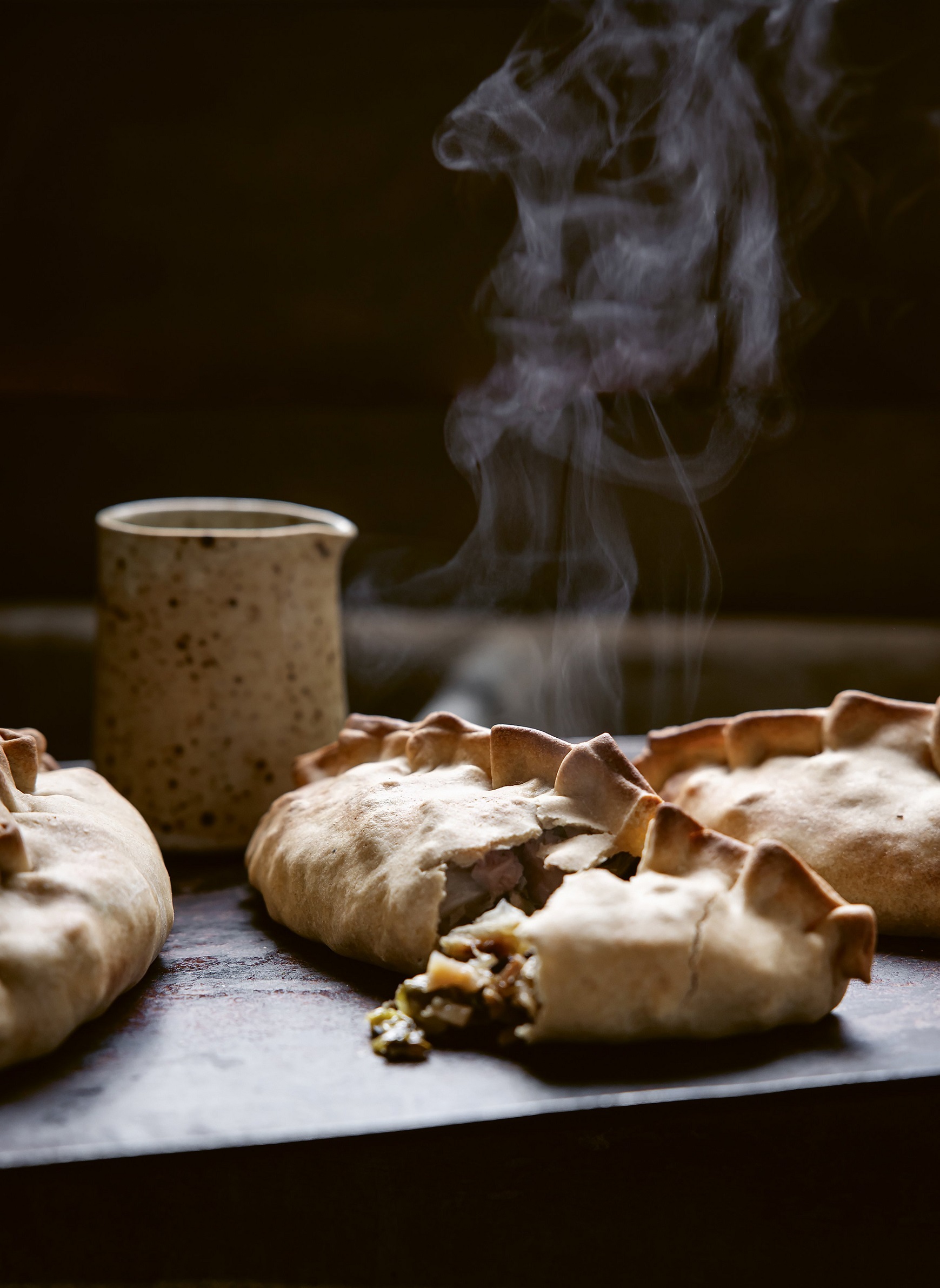 Roasted vegetable pasties
Roasted vegetable pasties

Makes 4 pasties
Ingredients
980g mixed roasted vegetables, at room temperature, cut into 2cm cubes (for the photo I’ve used fennel, potato and brussels sprouts)
3g chopped lemon thyme
3g chopped fresh sage
almond or soy milk, for brushing
tomato sauce, to serve
Spelt pastry
240g plain (all-purpose) white spelt flour, plus extra for dusting
25g extra virgin coconut oil
5g (1 tsp) salt
75ml–90ml water, enough to pull dough together
Method
Without a doubt, home-made pasties are a brilliant thing to have on hand — or even better, in hand. And if you do a weekly roast using lots of different vegetables, then pasties become fast-food options — fast, just not junky. Fast wholefood can be a thing if it’s broken down into sizable chunks throughout the week.
Make a weekly vege roast a part of your meal prep, and all of a sudden roast vege pasties are making a regular appearance.
You can use any roasted veges in these pasties. Potatoes, fennel, Brussels sprouts, pumpkin (winter squash), cauliflower and even beetroot work well — just don’t go for anything with too much liquid, like tomatoes.
The pastry is really quick to prepare, and versatile too. I use it for samosas, pies, "sausage" rolls — anything pastry wrapped.
Preheat your oven to 180°C.
Combine the roasted vegetables in a large bowl with the fresh herbs. Stir together and season to taste with salt and black pepper.
To make the pastry, combine the flour, coconut oil and salt in a food processor and blitz for 30 seconds. Slowly add a little water at a time until the dough pulls together to form a ball.
Place the ball of pastry on a floured board and cut into four even pieces. Have a small bowl of water ready to dip your fingers into.
Using a rolling pin, roll one pastry piece out into a circle about 20cm in diameter. Place one-quarter of the filling mixture in a small mound along the centre line, tapering at each end. Use your fingers to wet the edges of the pastry. Pull the two sides over the filling and press together using your index finger and thumb to concertina the join, working all the way around to each end. Finally, fold the very last piece of dough at each end over itself, to completely seal the pasty.
Repeat with the remaining dough and filling to make four pasties. Brush a little milk across the top of the pasties.
Bake for 25–30 minutes, or until the pastry just starts to colour and is cooked on the bottom. This is not the kind of pastry that puffs up, so don’t wait for that as a sign it’s ready.
Remove from the oven and slide on toi a wire rack, to ensure your pasties don’t end up with soggy bottoms. Nothing worse.
We always eat ours with Dad’s home-made tomato sauce. Not sure they can be called pasties without sauce!
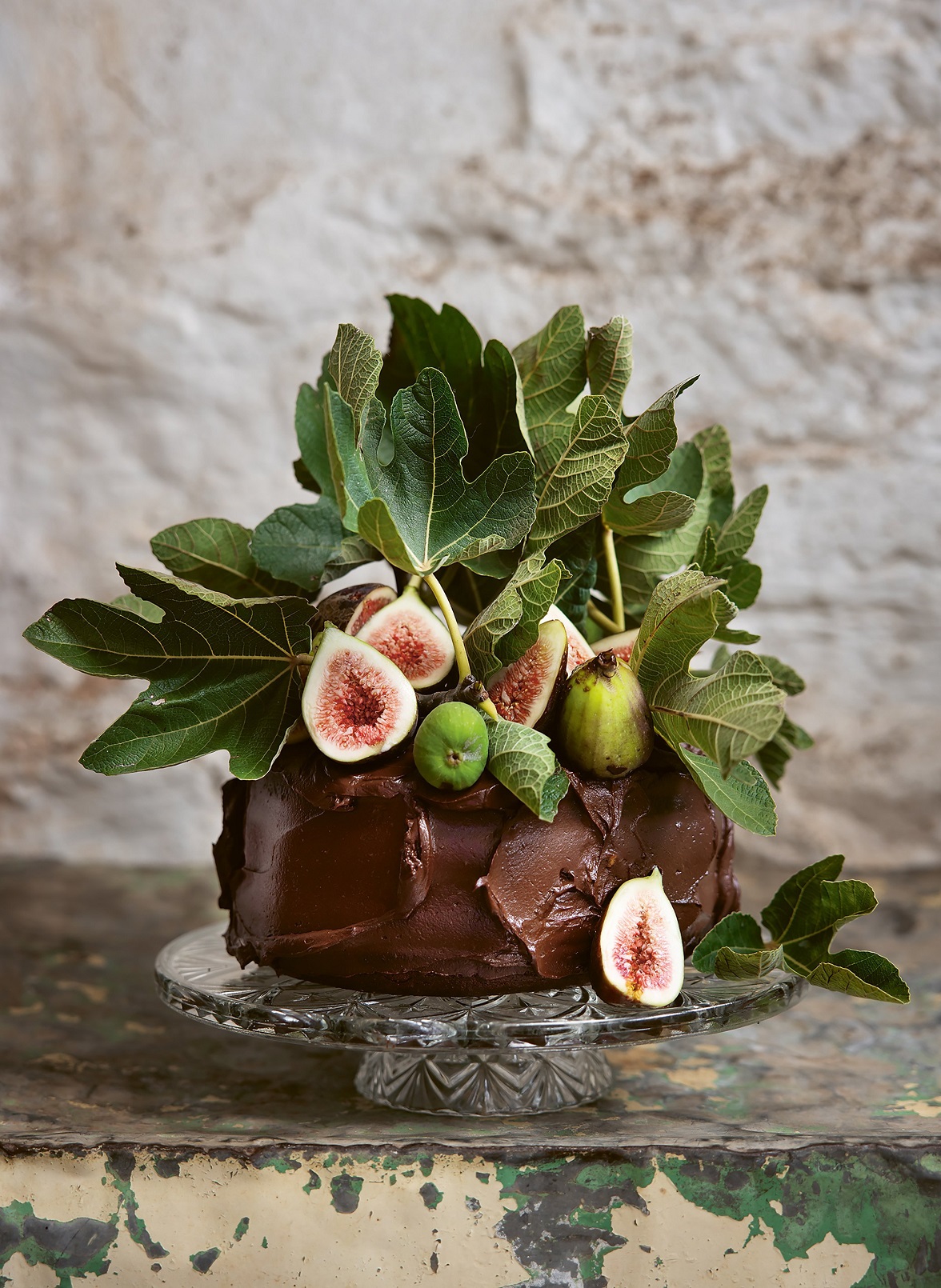 Rye, chocolate and beetroot cake with chocolate mousse creme
Rye, chocolate and beetroot cake with chocolate mousse creme

Wedding cakes are a favourite of mine. Not that I have a cake business, but if someone asks me to make their wedding cake, I can never say no, because I’m a hopeless romantic and absolutely love celebrating love. This particular cake has been a wedding cake for some of my favourite couples over the years. There’s more than one reason it’s been chosen time and again: it can be made gluten-free if requested, by simply replacing the flour with a gluten-free flour blend. It works just as well as cupcakes as it does as a whole cake; it’s a beautifully moist cake, so it lasts the distance of sitting on display all day.
When my sister asked me to make her wedding cake, her only request was that it be chocolate. I knew I’d make this cake for her. I also knew I wouldn’t mention the beetroot in it. You really can’t taste it, but the thought of beetroot in cake isn’t everyone’s idea of indulgence — even though, ironically, it’s the very reason this cake tastes so decadent. For my sister’s wedding I used my white chocolate cream icing, so feel free to play around with that.
More often than not, I use this rich chocolate mousse crème because it looks so lush and is the perfect backdrop for flowers and foliage.
I usually don’t mention it’s made from avocado, either! The avocado gives the icing the most amazing mouthfeel, and again, the chocolate overrides the flavour in every way. Once you’ve made this mousse crème, you’ll know what I mean. I often make it to have as a dessert with fresh berries, or just eat it on its own from the jar in the fridge.
The recipe below is for a single-layer 20cm cake, plus the amount of chocolate mousse crème needed to cover one single cake layer. Simply choose how many cake layers you would like, depending on the occasion, and multiply both the cake mix and the chocolate mousse crème quantity accordingly.
Makes 20cm round cake
Ingredients
110g beetroot, peeled and grated
110g rapadura sugar
150ml soy or almond milk
55ml extra virgin olive oil
40g maple syrup
10g (2 teaspoons) vanilla bean paste
125g (4 ½oz) rye flour
50g raw unsweetened cacao powder
30g almond meal
2g (½ teaspoon) salt
2g (½ teaspoon) baking powder
4g (1 teaspoon) bicarbonate of soda (baking soda)
5ml (1 teaspoon) apple cider vinegar
Chocolate mouse creme
2 avocados (300g)
155g (5 ½oz) maple syrup
75g raw unsweetened cacao powder
8g (2 teaspoons) vanilla bean paste
2g (½ teaspoon) salt
Method
Preheat your oven to 180°C. Line the base of a 20cm springform cake tin with baking paper and grease the inside of the tin with olive oil.
Put the grated beetroot in a food processor with the sugar, milk, olive oil, maple syrup and vanilla paste. Blitz until smooth.
Add the remaining dry ingredients to the food processor and blitz again.
Pour the mixture into a bowl and use a spatula to quickly but evenly mix the vinegar through. Don’t worry if you see white streaks — it’s just the vinegar reacting with the bicarbonate of soda and baking powder, and it’s a good thing!
Immediately pour the batter into the cake tin and bake for 30-40 minutes, or until the skewer inserted into the centre of the cake comes out clean.
Remove from the oven and leave to cool in the tin for 10 minutes, before turning out on to a wire rack.
While the cake is baking, make the chocolate mousse cream. Peel the avocados, remove the stones and scoop the flesh into a high-speed blender. Add the remaining ingredients and blitz until smooth and creamy. Leave in the fridge until you are ready to ice the cake.
When the cake is completely cool, smooth the icing over and decorate with your choice of flowers or foliage.
Any leftover cake will keep in an airtight container for 2-3 days.
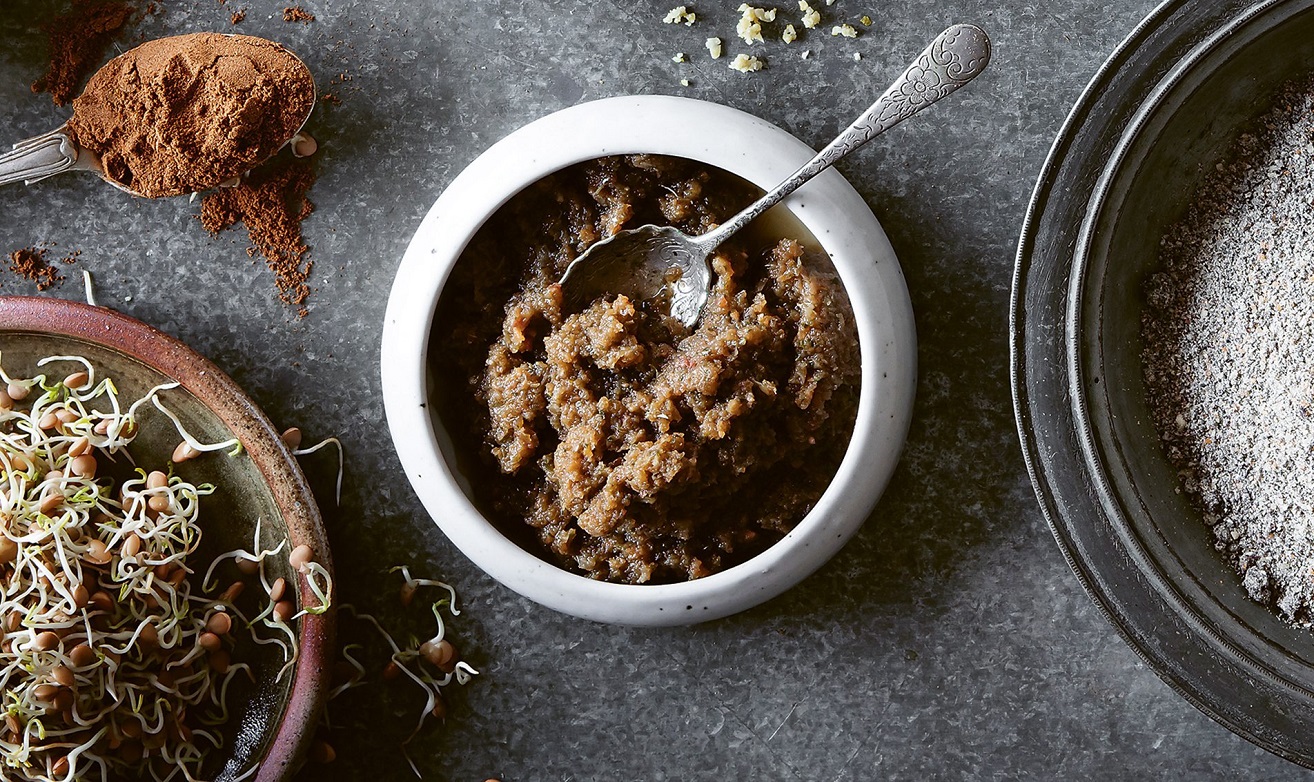 Wholefood vege stock paste
Wholefood vege stock paste

Makes About 1kg paste
Suitable for GF
Ingredients
250g leeks
200g fennel
200g carrots
250g celery
100g parsley, roughly chopped
100g coriander (cilantro), roughly chopped
60g sun-dried tomatoes in oil
10g garlic cloves (about 2 cloves), peeled
35g salt
Method
I would be lost in the kitchen without this wholefood stock paste. Definitely make this before you start cooking from this book, because it features heavily in many of my recipes. I know you’ll quickly find it indispensable whenever you’re after the concentrated punch of flavour often found in a stock cube. With this method there’s no reduction-boiling for hours — and you get all the fibre from the garden-fresh vegetables and herbs rather than it going into the compost.
Because it is preserved with salt, it has a full spectrum of foundational flavour, whether you use it in a similar way to a "sofrito" and fry it in some olive oil in a pan before adding veges for soup or pasta, or rice for risotto, or simply add a generous teaspoon to boiling water for an instant broth or ready-to-go liquid stock.
Feel free to mix up the herbs or veges based on your personal preference, but don’t be tempted to pull back on the salt, because its preservative action will allow this stock paste to keep in the fridge for many months. And you probably won’t need to add further salt to your cooking — it’s an all-in-one.
You can always use a powdered stock as a substitute in my recipes; you’ll just need to adjust for salt and liquid.
Wash the leeks really well, then trim and cut into rounds. Thoroughly wash the fennel and carrots, leaving the skin on the carrots, and cut into 2cm–3cm chunks, along with the celery.
Place all the ingredients, except the salt, in a food processor.
Blitz until the mixture has the consistency of a fresh curry paste; it won’t be perfectly smooth, because you don’t want soup. Leave a bit of texture in there, but just make sure there are no obvious large bits of any ingredients. Add the salt and blitz again just to mix through.
Immediately seal in jars and store in the fridge, where it will keep for about 6 months. So much goodness in each spoonful!

